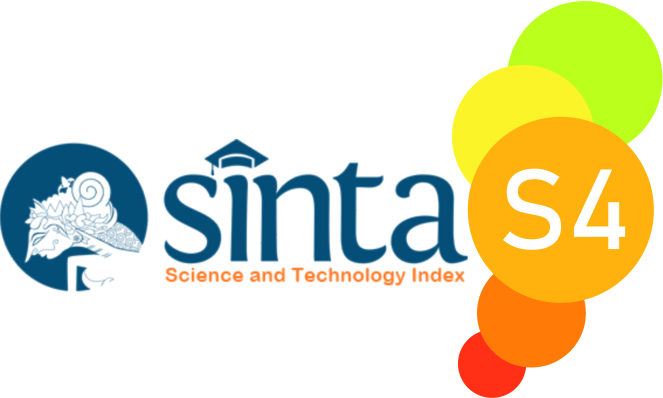Overview in the Use of Audio-Visual Learning Media in the Japanese Language Training Program at the Training and Skills Institute (LPK)
 ), Wisroni Wisroni(2),
), Wisroni Wisroni(2), (1) Universitas Negeri Padang
(2) Univeristas Negeri padang
 Corresponding Author
Corresponding Author
DOI : https://doi.org/10.24036/spektrumpls.v9i4.114698
Full Text:
 Language : en
Language : en
Abstract
This research was motivated by the success of the Hoshi Hikari Skills and Training Institute in Padang City in managing the Japanese language training program. This can be seen from the number of participants who passed each training, namely 95% of the participants who attended the training passed and 5% of most participants did not pass the medical test. This achievement cannot be separated from the program manager who is very competent in the field of training management at LPK Hoshi Hikaro, Padang City. This study aims to see an overview of the use of audio-visual learning media in the Japanese Language Training program based on aspects of preparation, implementation and evaluation. This type of research is descriptive quantitative research. The population in this study were training participants at LPK Hoshi Hikari Padang City, totaling 24 people. The sampling technique is Cluster Random Sampling, the sample is taken as many as 20 people. Data collection techniques using a questionnaire. While the data collection tool is a questionnaire. The data analysis technique uses the percentage formula. The results showed that (1) the description of the use of audio-visual learning media in the Japanese language training program at the Hoshi Hikari Training and Skills Institute (LPK) of Padang City in the preparation aspect was good, (2) the description of the use of audio-visual learning media in the Japanese language training program. at the Hoshi Hikari Training and Skills Institute (LPK) Padang City in the implementation aspect it was good, and (3) the description of the use of audio visual learning media in the Japanese Language training program at the Hoshi Hikari Training and Skills Institute (LPK) Padang City in the evaluation aspect was good
References
Bistari, Y. B. (2018). KONSEP DAN INDIKATOR PEMBELAJARAN EFEKTIF (pp. 13–20).
Oktober 2017 - Maret 2018.
Hayati, N., & Harianto, F. (2017). Hubungan Penggunaan Media Pembelajaran Audio Visual dengan Minat Peserta Didik pada Pembelajaran Pendidikan Agama Islam di SMAN 1 Bangkinang Kota. Al-Hikmah: Jurnal Agama Dan Ilmu Pengetahuan, 14(2), 160–180. https://doi.org/10.25299/al-hikmah:jaip.2017.vol14(2).1027
Jihad, A. dan A. H. (2010). EVALUASI PEMBELAJARAN. Multi Pressindo.
Nurlevia Devi, D. (2016). PENGARUH PENGGUNAAN MEDIA AUDIO VISUAL TERHADAP HASIL BELAJAR SISWA DALAM PEMBELAJARAN IPA KELAS V. 1–12.
Padmaningrum, R. T. (2013). PEMILIHAN DAN PENGGUNAAN MEDIA DALAM PROSES
PEMBELAJARAN. Jurdik Kimia, UNY, September, 67–68.
Sulfemi, W. B. (2018). Penggunaan Metode Demontrasi Dan Media Audio Visual Dalam Meningkatkan Hasil Belajar Peserta Didik Mata Pelajaran Ips. Pendas Mahakam: Jurnal Pendidikan Dasar, 3(2), 151–158. https://doi.org/10.31227/osf.io/qrhsf
Sugiyono. (2017). Metode Penelitian Pendidikan Pendekatan Kuantitatif, Kualitatif dan R&D. Alfabeta
Syaiful Bahri Jamara, Z. A. (2010). STRATEGI BELAJAR MENGAJAR. Rineka Cipta.
 Article Metrics
Article Metrics
 Abstract Views : 250 times
Abstract Views : 250 times
 PDF Downloaded : 58 times
PDF Downloaded : 58 times
Refbacks
- There are currently no refbacks.

This work is licensed under a Creative Commons Attribution-NonCommercial 4.0 International License.



